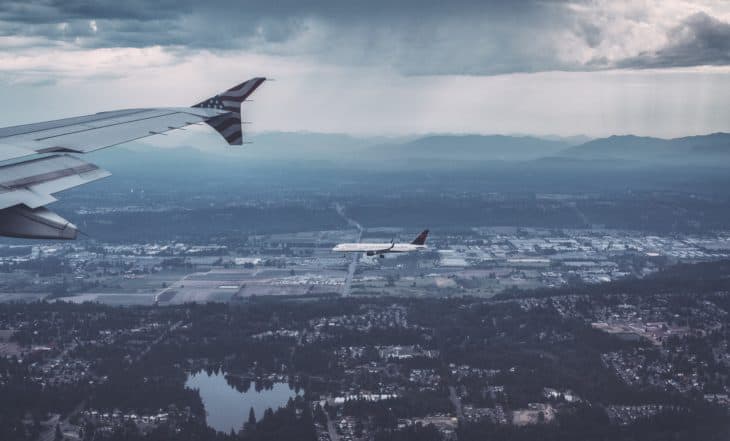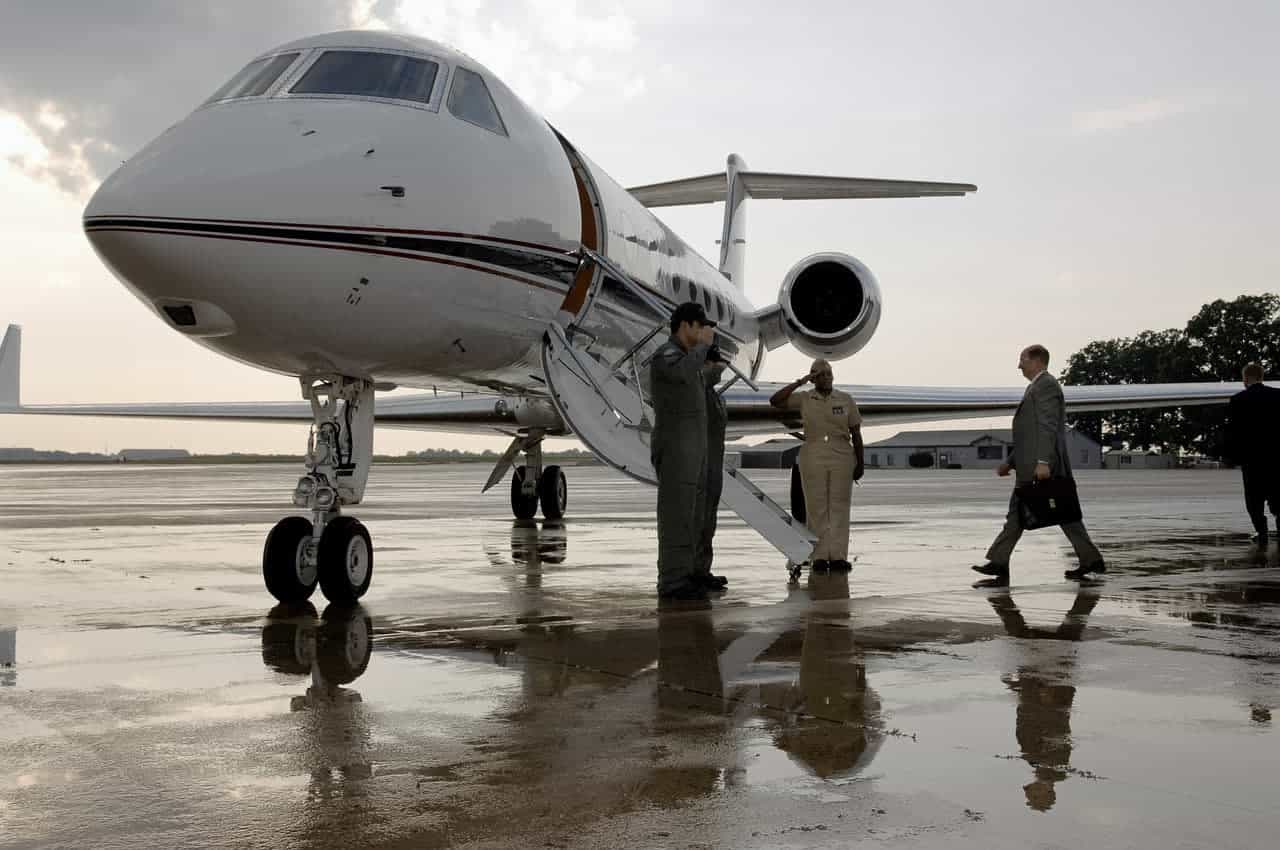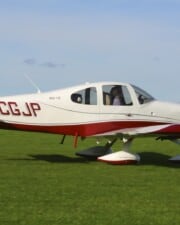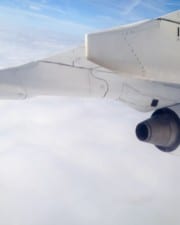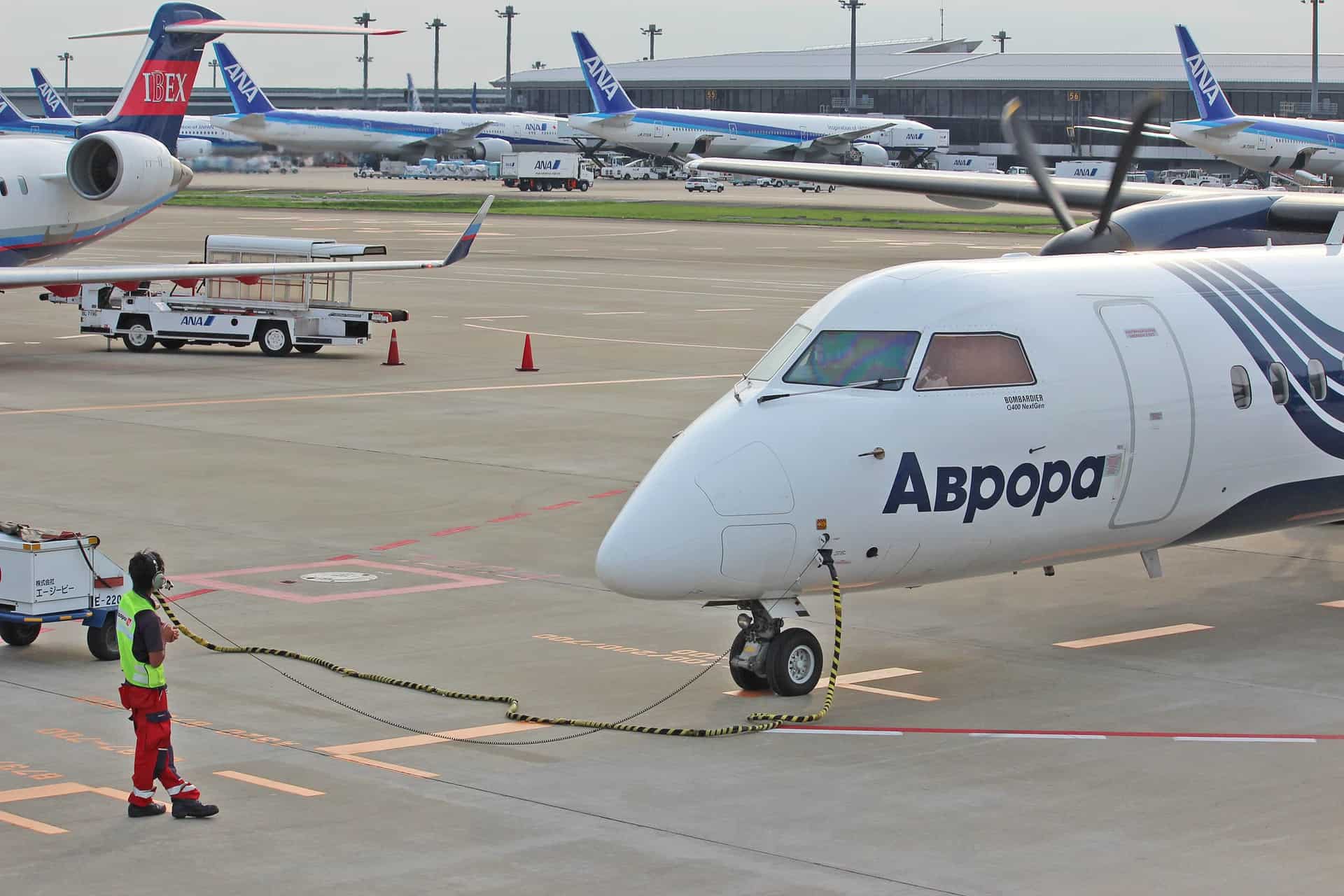Have you ever wondered how high a plane can fly? Many people confuse an airplane’s “cruising altitude,” which is simply the altitude at which the pilot has chosen to fly today, with the “ceiling”–the limit of its abilities. Most planes do not operate at their ceilings very often for safety reasons.
An aircraft’s service ceiling is defined as the altitude at which its climb rate becomes so slow that it has effectively “topped out.” It can keep climbing a bit higher (until it reaches its “absolute ceiling”), but most pilots will not exceed the service ceiling. The most significant factor that sets a plane’s ceiling is the engine’s ability to produce power, but aerodynamic factors also contribute.
Table of Contents
What Happens If a Plane Flies Too High?
Pilots and aircraft manufacturers use many terms to discuss how high an aircraft can fly. A ceiling is, like inside a room, the upper limit of its abilities. Higher performance aircraft can push the boundary higher and higher, but there are varying levels of effectiveness.
Engine Limits
When looking at altitude, it’s essential to think about how the atmosphere changes as the aircraft climbs higher and higher. As the ground gets farther away, the atmosphere gets less dense. With fewer oxygen molecules per volume of air, the aircraft’s engine will produce less and less power.
If an airplane is normally-aspirated, meaning that the engine intakes outside air without compressing it, then the upper limit of its abilities will be found somewhere below 15,000 feet. If the engine compresses the outside air before adding fuel and igniting it, its operating ceilings will be much higher.
Even propeller-driven airplanes can use compression to add to their engine power at altitude. The two ways to accomplish this are with a turbocharger or a supercharger. Both take the outside air and compress it before putting it into the engine. This, in effect, makes the engine “feel” like it’s operating at a lower altitude.
The other common way to compress outside air is by the use of turbine engines. Turbines are basically huge air compressors, so they are perfect for use at high altitudes.
These compressors, whether a turbocharger or a turbine engine, do have limits, however. As the air becomes less dense at higher altitudes, the blades can spin faster and faster. They are structurally limited to how fast they can spin. To keep them from over-speeding, the manufacturer will set a “maximum operating altitude.”
Aerodynamic Limits
Engines aren’t the only limiting factor when it comes to altitude. The aerodynamics of some types of aircraft are more affected by lower densities than others. Just like the engine has less air to operate, so too does the wing. Generally, enough power and forward speed will keep the airplane climbing and flying.
There is a lot of ‘airspace’ to cover in high-altitude aerodynamics–many interesting things happen at high altitudes. While the airplane’s MMO (critical Mach number) stays a constant indicated airspeed, the plane’s stall speed will increase with altitude. The result is that, at very high altitudes, planes operate in a tiny envelope between needing to go fast enough not to stall but slow enough not to build up supersonic airflow over their wings.
The narrow range of airspeed limits is known as “coffin corner” because care must be exercised, and the limits must be respected.
As a plane flies higher, the difference between the two speeds continues to decrease. If the plane’s stall speed is now the same as its maximum airspeed, the plane is at its “aerodynamic ceiling.”
But what about helicopters? Helicopters are also limited in several ways because their lift is generated by spinning the rotor blades. This speed is limited by physics–those blades cannot exceed a certain RPM. As altitude increases, the helicopter will eventually be unable to climb any higher since it cannot spin the rotor blades faster.
Cabin Pressure Limits
There’s another limitation that high-altitude aircraft have–how well does the cabin pressurization system work? Manufacturers build planes for a specific performance profile.
If a plane is an airliner, which will fly in the 30,000 to 40,000-foot range for its entire lifespan, they will make the cabin pressure system work for that range of altitudes. If the plane starts climbing up higher, the cabin pressure system will not maintain its normal cabin altitude, usually 8,000 feet.
Higher performance planes might have better systems installed. They may force more air into the cabin or just have better air seals on the fuselage. For example, many corporate jets routinely operate in the 40,000-foot flight levels. What’s more, their cabin pressure systems may already maintain lower altitudes for a more comfortable guest experience.

Definition of Service Ceiling
The most common term used by pilots and plane makers is “service ceiling.” The service ceiling is very explicitly defined. Service ceiling is the altitude at which the plane can no longer maintain a climb rate of more than 100 feet per minute (fpm).
Why 100 fpm? It’s an arbitrary number, really, but for what it’s worth, it’s slow. If you do the math, at 100 fpm it will take an aircraft ten minutes to climb 1,000 feet.
Even low-performance aircraft can climb at 700 to 1,000 fpm at sea level, so they are pretty high by the time they are climbing at 100 fpm. It’s worth noting that pilots must notify air traffic control if they cannot maintain a 500 fpm climb on IFR flights. Five hundred feet per minute is a standard number for planning climbs and descents on IFR flights.
The 500 fpm rule of thumb is also vital for departure planning. Pilots have to give special consideration to high-altitude airports or how the plane will operate on super hot days. Under these conditions, if the plane takes too long to climb after takeoff, it might not clear the obstacles or terrain at the end of the runway.
Service Ceiling vs. Absolute Ceiling
The next term discussed with aircraft ceilings is “absolute ceiling.” As it sounds, this is the level at which the plane can no longer climb at all. All it can do is maintain altitude. If it goes any higher, the only thing it can do is begin descending.
Service ceiling and absolute ceiling are defined and discussed in the FAA’s Pilot’s Handbook of Aeronautical Knowledge, Chapter 11–Aircraft Performance.
Service Ceiling vs. Maximum Operating Altitude
Another term that will be found in certain aircraft flight manuals (AFMs) is the “maximum operating altitude,” sometimes also called the “maximum certified ceiling.” If a plane has such a limit, the manufacturer has determined that it cannot safely exceed this altitude. This limit is related to the engines. When the air gets less dense, compressor blades can spin faster than their designs allow. If there is an over speed situation, it will damage the engine or turbocharger.
Maximum operating altitude is discussed, along with high-altitude operational considerations, in the Pilot’s Handbook of Aeronautical Knowledge, Chapter 15–Transition to Jet-Powered Airplanes.
Multi-Engine Ceiling Considerations
Most pilots don’t give much consideration to the ceiling limits of their aircraft daily. They know where they usually cruise, and they pick the best altitude based on the wind conditions and the regulations.
But pilots of multi-engine airplanes have one more factor they need to consider. When a twin-engine airplane loses the power from one engine, its performance suffers greatly. By some estimates, a plane loses 80 percent of its performance abilities, especially regarding its ability to climb to a higher altitude.
For this reason, pilots consider their “single-engine service” and “single-engine absolute” ceilings. For this definition, the service ceiling is when the airplane can no longer maintain a 50 foot per minute climb.
Transport-category airplanes are designed with a few assurances that light normal-category aircraft are not. A small light-twin, like a Piper Seminole, will not climb well on one engine. There is no guarantee that it will climb at all, even at low altitudes near the ground.
For that reason, pilots must carefully calculate their performance before departure. If they have an engine failure, will they be able to climb at all?
Multi-engine factors are detailed in the Pilot’s Handbook of Aeronautical Knowledge, Chapter 12–Transition to Multiengine Airplanes.
Cruise Altitudes–Service Ceiling vs. Cruise Ceiling
Many times you will find the altitudes that a plane flies referred to as a “ceiling.” This isn’t strictly true since most planes do not routinely fly at the upper limit of their abilities. Pilots would rather fly slightly lower and maintain the ability to climb rather than fly at an operation ceiling.
Cruising altitudes are chosen for a variety of reasons. Some guidance comes from the Federal Aviation Regulations. To better separate airplanes flying cross countries, altitudes are divided depending on which direction you are flying.
FAR Part 91 states that flights that are headed eastbound, from 0º to 179º, shall maintain odd-numbered thousands of feet. Westbound flights, from 180º to 359º shall maintain even-numbered thousands of feet. The altitudes are further divided between IFR, which fly at thousand-foot levels, and VFR, which fly at that altitude plus 500 feet.
So, an eastbound IFR flight could choose their altitudes at 3,000, 5,000, 7,000, etc.
A westbound IFR flight could choose 4,000, 6,000, 8,000, etc
An eastbound VFR flight could choose 3,500, 5,500, 7,500, etc.
And finally, a westbound VFR flight chooses between 4,500, 6,500, 8,500, etc.
Above 18,000 feet (in the US), airplanes set their altimeters to 29.92″ Hg, meaning that they fly pressure levels, or flight levels. There are no VFR flights allowed above 18,000 feet, so only IFR flight levels are available.
After a pilot decides what the regulations require, they look at their plane’s abilities and decide where its optimum performance range is. They look at factors such as their fuel burn and true airspeed at a given altitude. Most planes are more efficient the higher they go. High-altitude aircraft pilots must also find an altitude that will provide a margin of safety against Mach buffet.
Once they have an idea of their performance, they look at the winds aloft. Are there more favorable winds at one altitude than another?
Winds are the most significant factor that affects pilots on cross countries. A commercial airliner, traveling over several thousand miles above 25,000 feet, can shave hours off their flight by choosing the right altitude. Eastbound flights over the US nearly always happen faster than westbound flights, simply due to the prevailing upper-level winds. Winds are much stronger in the upper atmosphere, so in some cases, headwinds or tailwinds might add 100 knots or more to their ground speed.
With all of these factors settled, they make their best guess as to what altitude they should fly. If the weather forecast was wrong, they can change the final altitude in the air. Air traffic control may also have other limits and assign a different altitude, so the final decision is affected by other factors.
Related Posts



